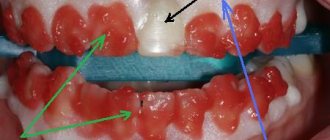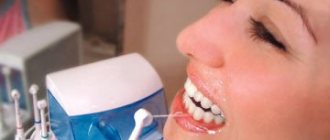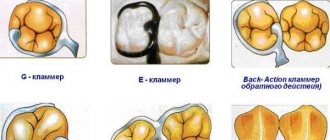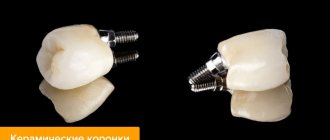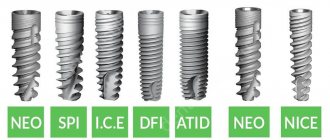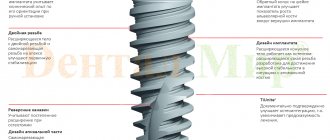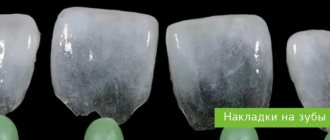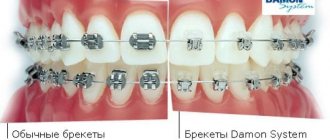All equipment used in dentistry can be divided into several types. It is convenient to use the following categories:
- Dental units, chairs
- Dental handpieces and micromotors
- Dental compressors
- X-ray dental equipment
- Dental peripherals and additional equipment
- Dental lighting
- Disinfection and sterilization
- Dental furniture
How different types of dental equipment are designed and how they work
Let's analyze the structure of dental equipment
using the example of a dental unit - a key element without which a dentist’s work is impossible. Dental chair / unit - complex complex equipment contains and combines several important subsystems: electrical / mechanical, hydraulic and pneumatic. Moreover, even in the most modern installations with a huge amount of electronics, it is impossible to do without water, air and aspiration systems.
Main elements of the dental unit:
- Patient chair (dental chair)
- Doctor's block (Unit)
- Control unit, pedals, panels and switches
- Assistant unit (water block, vacuum cleaner, aspirator / saliva ejector, spittoon / sink)
- Shadowless lamp
- Compressor
- Micromotors, dental handpieces
Ergonomics
The comfort of the patient and the quality of work of doctors depend on the level of noise, vibration, position in the chair, and the location of the blocks. Do not neglect ventilation if it is required.
The lighting should be bright enough. It is worth paying special attention to the position of the head and neck in the patient’s chair: the seat should not put pressure on the blood vessels.
Vibration is also important - too frequent vibrations are extremely unpleasant for all participants in the process and can cause poor health.
It is impossible to imagine the work of a dentist without installation. This is a complex mechanical and electrical device that combines a whole complex of systems.
Modern devices are constantly being improved, which improves the quality of treatment. A beautiful snow-white smile is becoming more and more accessible to everyone.
The device of the dentist's unit of the dental unit
The doctor's block or Unit contains certain control elements (in modern dental equipment these are touch-sensitive keys or mechanical switches, protected from moisture and providing convenient handling). Also in the doctor's block is the main working dental instrument. Units (blocks) are divided into two types: with top tool feed and bottom feed.
Dental units with top feeding of instruments are distinguished by a fairly convenient instrument return system. But the doctor’s movements are limited by the length of the sleeve, and in general, working on such a setup has its own specifics.
Design of dental unit (equipment)
, where a bottom feed is provided, can be called more ergonomic, the devices do not hinder the movement of the dentist, and the sleeves are longer and are designed for any possible position of the patient and the doctor, however, he must constantly monitor the tips and their position; it is much easier to allow the tip to fall and damage here. more likely, especially during work and disinfection.
If this happens, you must immediately contact an engineer to diagnose and repair dental equipment, since even a small mechanical defect can lead to failure of the micromotor tip or more serious problems.
Tips for installations
A handpiece in dentistry is a mechanical device through which the instrument is given movement in a certain direction at the required speed. The tip also secures the device.
Handpieces for dental units are divided into the following types:
- angular (cannot be combined with motors and mounting adapters from two different manufacturers at the same time);
- straight;
- turbine;
- specialized.
The drive type can be electric or air (for low speed).
The parts are connected to the drill hoses in the following ways:
- straight – the end switches are screwed onto the hose;
- fast - using thread;
- transitional - from one thread to another, used when working with flexible hoses.
Types of air supply are divided into two, four and six-channel connections.
Performance characteristics:
- Ergonomic . The backlight can be made using the fiber optics method, it can be a rigid light guide - but a protective coating must be present everywhere. The vibration level is low.
- Hygienic . There must be a valve to prevent infection from entering the mouth into the sleeves of the machine.
- Technical . Type of bearings – air, metal, ceramic. The size of the rotor head affects the strength and power indicators, as well as the accessibility of the tool to the tooth being prepared.
- Cooling – two, three, and four-point system.
The tips include the following mechanisms:
- micromotors with and without brush;
- piezoelectric scaler;
- air micromotor;
- turbine tip;
- handpieces with built-in micromotors;
- preventive;
- devices for working with crowns and bridges.
How is the management of a dental unit structured and organized?
The design of the control unit of the dental unit
, as a rule, is divided into two parts - switches and a small control panel are in the doctor’s module.
The pedal of the dental unit is a separate external unit. Often, the pedal can be used to control the position and tilt of the chair, the speed of rotation of the instrument, and other aspects of the operation of the dental unit. The functional pedal simplifies the doctor’s work as much as possible, freeing his hands for examination and therapeutic manipulations.
How does the pedal work and what does it consist of?
Structurally, the pedal consists of a multi-position switch (or smooth regulator) and a force/pressure level reading unit. The pedal is connected by cable to a separate connector, which is very convenient, since if necessary, the pedal can be disconnected for repair/maintenance/cleaning or temporary replacement.
Planmeca Compact i5
Planmeca Compact i5
Now let's see. What does the glorious Finnish company Planmeca offer in this price category. If in the previous review we recommended Planmeca Compact i Classic, then in this review we advise you to pay attention to another model of the Compact i family. By the way, the best-selling family of dental units. The price has increased, but at the same time you get new, constantly updated features and capabilities. After all, this is the culmination of the work and improvement of as many as five generations.
The first thing that surprises the installation is its pleasant appearance and compactness. Here I would like to note that compact does not mean small, the installation is as functional as possible and is designed so that the doctor and assistant feel comfortable. Therefore, even such a seemingly trivial thing as a doctor’s console mount is available in a wide range.
The Compact i5 has many, many more advantages, from a comfortable patient chair to the Planmeca Solanna lamp, but this short review cannot list everything. We will just draw your attention to the fact that when you buy a Compact i5, you are getting an installation that will serve you for many years. And it's not just about reliability, it's just designed in such a way that it can be updated with new features and improvements at any time. No matter how your preferences change, she will be able to match them.
Characteristics:
- Installation: Fastening to the floor;
- Number of places for tools: 5;
- Patient chair: Electromechanical;
- Tool supply: Optional;
- Type of saliva ejector and vacuum cleaner: Ejector;
- Lamp: Planmeca Solanna, 8,000 – 50,000 lux.
Price: to find out the price, click the “Where to buy” button
WHERE CAN I BUY
Device of the dental assistant unit
Modern auxiliary units are designed in such a way that they can be controlled (if necessary) by the doctor himself. At the same time, the possibility of control for the nurse is also provided in many installations.
What does the assistant unit consist of?
- valve body
- vacuum cleaner
- aspirator / saliva ejector
- spittoon/sink
Hydraulic unit
— purification system, multi-stage water treatment, water supply. Can also be used to store distilled water in the unit
Saliva ejector/aspirator
and
a dental vacuum cleaner
are technically very similar systems and can sometimes even be connected to the same compressor (but more often, different units are used for these tools).
Saliva ejection systems can be found much more often; they are found in many installations. At the same time, a portable system is also used, which is not technically a part. installations.
How does a saliva ejector work?
The saliva pump directly includes the compressor itself, which provides vacuum supply/aspiration, a system of tubes, filters, valves, a power unit, its own control panel, and a connection system to the general system of the dental unit.
Stationary or rotating sinks/spittoons are also now available in most installations, but the standard allows them to be replaced with disposable kidney-shaped containers.
The design of a shadowless lamp, with the exception of the method of attaching it to the dental unit itself and the ability to control it from a common panel, is no different from conventional shadowless medical lamps.
Dental compressors use a special type of dental compressor design to ensure maximum silence during operation.
The doctor's unit can be equipped with additional tools:
- a scaler (air or electric) is a device that allows you to carry out a number of dental procedures completely painlessly, but the main thing is to clean the enamel from plaque;
- a physiodispenser is a multifunctional device that can be used to solve many surgical and therapeutic functions, most often for implantology.
- Polymerization dental lamps - for working with a special type of dental materials that require polymerization.
Classes
In terms of staffing, technical capabilities, clinical and aesthetic qualities, as well as cost of the dentist. installations are divided into three groups.
Economy
The number of functions in these installations does not exceed the required minimum level. Working with them takes a little longer because the doctor needs to change instruments more often. The mechanism is of high quality, comfortable for both the doctor and the patient. The design is modest, not distinguished by sophistication.
Examples: “Unik T Standard”, “QL-2028” (Pragmatic), “AJ AX AJ11”.
Video review of “QL-2028” (Pragmatic)
Business
Higher quality. The range of adjustments is higher. The ability to use and adjust a wide range of instruments is available - accordingly, such a mechanism allows doctors to perform a significant amount of work in a short period of time.
The equipment includes additional equipment - a photopolymerization device, an ultrasonic piezoelectric scaler, tip illumination and other devices.
The control system has control functions, more convenient and ergonomic. The price category is at an average level. Equipment of this category is most often used in clinics.
Examples: “KaVo PRIMUS 1058 S”, “Chirana Denta”l (Diplomat Lux), “Tempo 9”, “Ajax 18”, “DARTA 3000”.
Video review of “Ajax 18”:
Elite
Only the most advanced technologies are used to produce premium products. The functionality has been expanded, especially in the field of programming - control from a computer, you can monitor the condition of your teeth on the monitor - even the most microscopic nuances are visible.
The equipment is distinguished by its original design and individual stylish design. The highest price category.
Examples: KaVo ESTETICA E80 T, Stern Weber, Planmeca.
Presentation "KaVo ESTETICA"
Additional dental equipment
For treatment to be effective, it is necessary to make a correct diagnosis. A wide variety of equipment types are used for these purposes:
- a radiovisiograph is an electronic device that allows you to display an x-ray image of a tooth directly on a computer monitor, i.e. you can obtain an image almost in real time;
- systems that allow teeth whitening;
- An apex locator is a special instrument that is used to measure the length of root canals.
The dental office must use sterilizers (autoclaves, dry heaters, quartz units) - equipment necessary for removing microorganisms from dental instruments.
Contact us: we will answer any questions about the equipment. We will help you check the current condition. We will conduct joint remote diagnostics. Or we’ll come for a full on-site inspection.
Dentsply Sirona Teneo
Dentsply Sirona Teneo
In this price category, Dentsply Sirona is represented by a fairly wide range of premium units. Each of them has its own advantages, so it is not surprising that we included more than one in this review. In particular, Teneo is an innovative device that can adapt to the personal needs of the doctor. This was made possible thanks to the electromechanical movement of the doctor's module parallel to the patient's chair, an automatic headrest and a rotating spittoon. This allows the doctor and assistant to work in the most ergonomic position.
Ergonomics of this installation is, as they say, “in the blood”. At the touch of a button, it will position the patient at the ideal working height while feeling luxurious thanks to the massage function and lumbar support. And these are not all the advantages of the installation. For example, it has built-in functions for implantology and endodontics. There is no need for any settings or external devices, the transition from examination to treatment will be as smooth as anything. And everything is controlled by foot control from a wireless pedal.
It is also worth noting that Teneo supports all modern reciprocal file systems: for example, Wave One, Wave One Gold, Reciproc and Reciproc blue.
Characteristics:
- Number of places for tools: 6+1;
- Patient chair: Electromechanical;
- Tool supply: Optional;
- Type of saliva ejector and vacuum cleaner: Ejector;
- Lamp: LED View Plus operating light up to 40,000 lux.
Price: to find out the price, click the “Where to buy” button
WHERE CAN I BUY
Planmeca Sovereign Classic
Planmeca Sovereign Classic
In this price category, Planmeca has another worthy candidate. Its price is justifiably more expensive, and despite the similarities, there are a number of differences between them, such as 6 instruments on the doctor’s table.
It also focuses on the convenience of the doctor and the comfort of the patient. At the same time, the ergonomic design does not reduce the capabilities of the device in any way. The installation is intelligent both inside and outside.
The Sovereign Classic can be positioned for right/left-hand operation by simply rotating the cuspidor and chair assembly. The available modular “Flexy” holder for suction tubes and additional instruments allows for any operations during the treatment process.
The main feature of the installation is infection control. Both continuous and periodic disinfection can be used. The ease of its operation is achieved due to the fact that the installation is made of smooth and homogeneous material. When painting, epoxy powder paint is used, which is resistant to various cleaning agents. And the latest methods for cleaning suction hoses guarantee complete safety.
Characteristics:
- Dimensions: 1930 x 1175 x 1930 mm;
- Number of places for tools: 6;
- Patient chair: Electromechanical;
- Tool supply: Optional;
- Type of saliva ejector and vacuum cleaner: For vacuum pump;
- Lamp: Planmeca Solanna, 8,000 – 50,000 lux.
Price: to find out the price, click the “Where to buy” button
WHERE CAN I BUY

